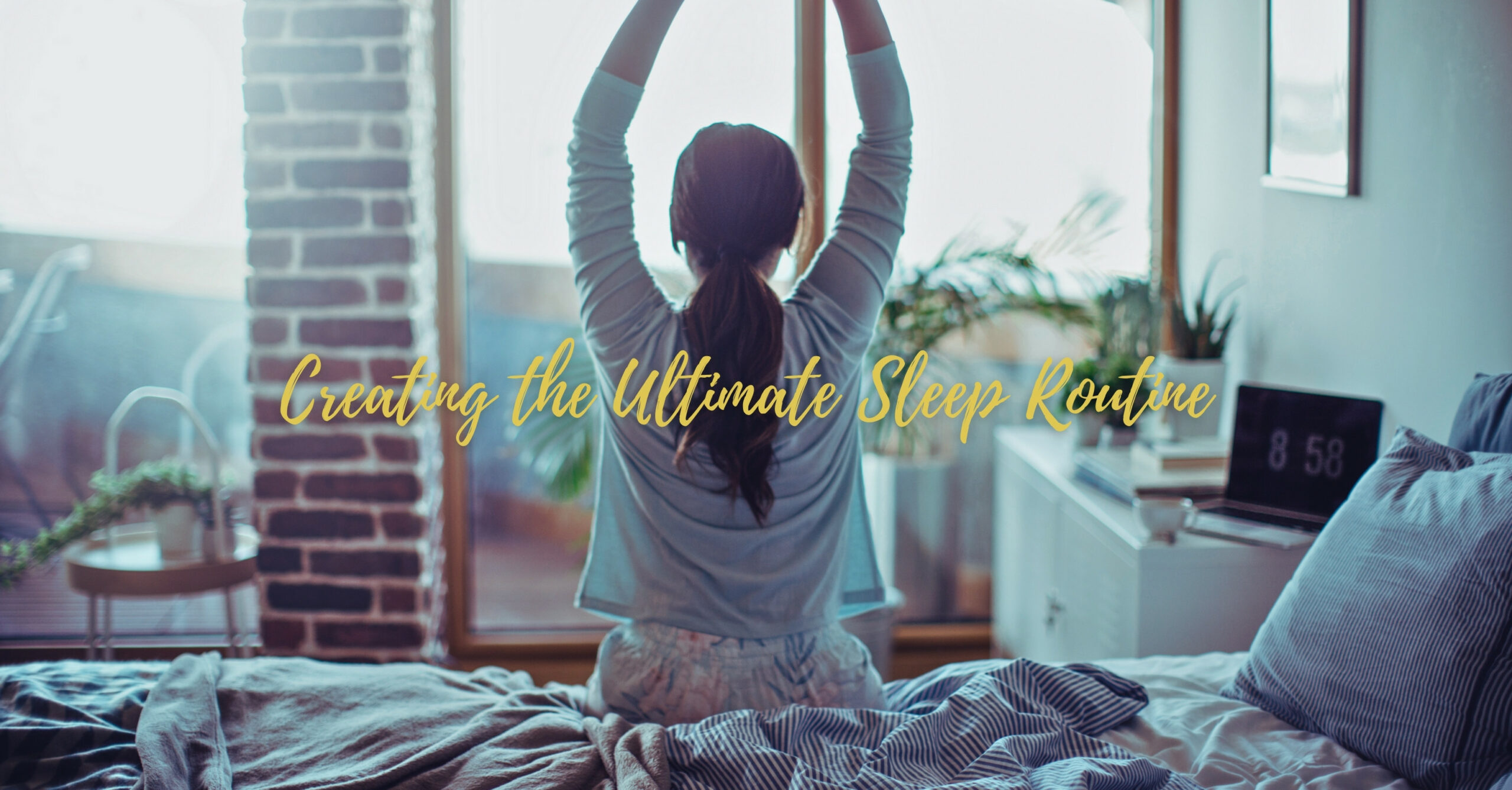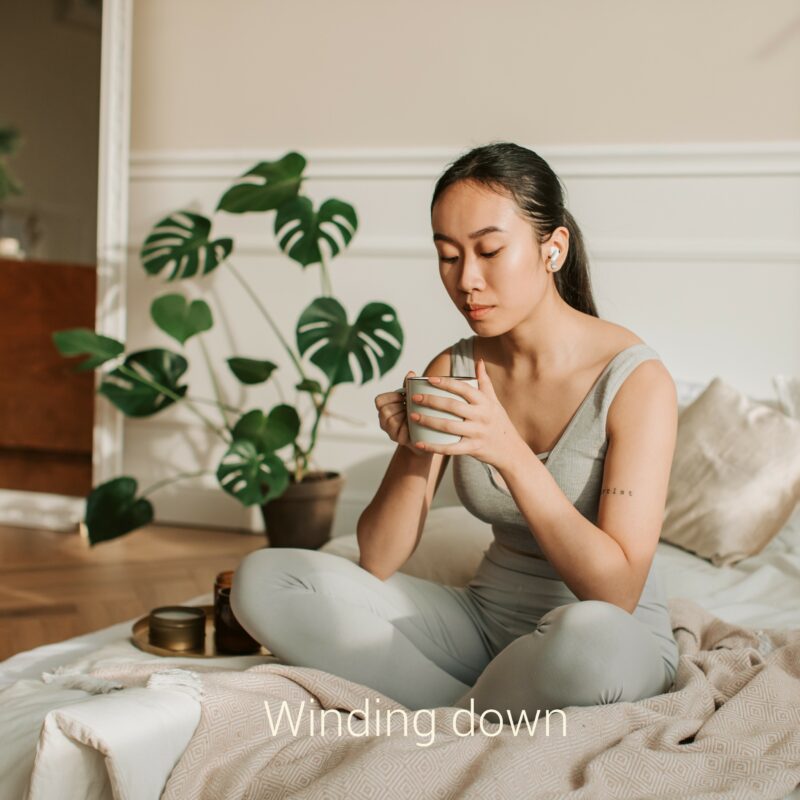Creating the Ultimate Sleep Routine
Optimize Your Sleep for Sleep Awareness Month
The days are growing longer as we move toward the Spring Equinox and the clock just sprung forward for most of us in the US, causing us to lose an hour of precious sleep. Monday March 13th is National Napping Day (no doubt to help us catch up that lost hour), and Friday March 17th is World Sleep Day. So it makes perfect sense that March is National Sleep Awareness Month.
The American Academy of Sleep Medicine conducted a survey in 2019 and discovered that 63% of adults in the US report feeling the effects of Daylight Saving Time (DST), and it takes them an average of four to seven days to recover. The Journal of Sleep Medicine published a study in 2014 that found an increase in workplace injuries, particularly on the Monday after the time change. And several studies have linked DST with circadian rhythm disruptions and other health risks, such as stroke and heart attack. Yikes!
Sleep is serious business, and it’s gaining more attention these days. Sleep is a mysterious phenomena, even to experts, and it’s connected to everything we do all day long—not just what we do at night. Everything from diet to exercise to stress and other lifestyle factors can determine the quality and quantity of the sleep you get. And as anyone with insomnia knows, if you don’t get enough quality sleep, everything else in life suffers.

So What Do We Do?
Luckily, some intelligent folks out there are on the case. One of the biggest proponents of smart sleeping is Dr. Andrew Huberman of the Huberman Lab podcast. Huberman is a neuroscientist and tenured professor in the department of neurobiology at Stanford School of Medicine, and his podcast is frequently ranked in the Top 15 of all podcasts globally and is often ranked #1 in the categories of science, education, and health & fitness.
He’s devoted a large amount of bandwidth to sleep research and what to do to ensure we get the sleep we need. One of the most important actions he discovered is viewing morning and afternoon sunlight—so important that his audience routinely teases him about how often he mentions it. But here at Shepherd’s Dream, we get it because when you look at sleep, it’s clearly a major player in our circadian rhythm, and natural light is one of the biggest drivers of that whole cycle. Check out our Healthy Sleep Series post on Melatonin for more on that.
There are many tips and tricks we can try in our quest for good Zs. Some are science-based approaches, like Huberman’s, and others are more lifestyle oriented behaviors, known as sleep hygiene. Below, we’ll share our favorites from both categories.
The Science
Huberman prescribes several lifestyle tweaks for optimal sleep. You can view the entire list, along with more in-depth detail here. Here’s some of our faves:
- View sunlight by going outside within 30-60 minutes of waking. Do that again in the late afternoon, prior to sunset. Face the general direction of the sun, don’t look directly at it. Huberman recommends 10 minutes of exposure on a clear day, 20 minutes on an overcast day, and 30-60 minutes on a cloudy day. This helps reset your circadian clock, so be sure not to wear sunglasses or a brimmed hat.
- Wake up at the same time each day, go to sleep when you first feel sleepy in the evening. Our circadian rhythm is just that—a rhythm. It likes consistency. And pushing through our first sleepy signals at night can lead to those annoying 3am wake ups.
- Avoid caffeine within 8-10 hours of bedtime. Stay tuned for the next installment in our Healthy Sleep Series, when we go into more depth with this one.
- Keep the room you sleep in cool and dark, and layer on blankets that you can remove. Our body temperature needs to drop a few degrees in order to bring on sleep, so keep your bedroom temp somewhere between 60-67 degrees.
- Drinking alcohol messes up your sleep. As do most sleep medications. We covered alcohol and sleep here, and many of our Healthy Sleep Series posts cover natural ways to invite better sleep instead of needing to rely on medications.
The Ritual
Here’s where you get your in-home spa mojo going. Riffing off that “rhythm” part of circadian rhythm again, our body loves predictability and consistency. One way to get your body ready for sleep is to signal to it that it’s time to wind down for sleep, rather than sprinting toward the end of our day, flopping into bed, and expecting our bodies to magically drift off.
This can be done in a myriad of ways, pick the ones that speak to you for your own customized sleep routine.
- Dim the Lights. As mentioned, light is one of the biggest factors and signalers for our sleep cycles, and this goes for the artificial light in our homes as well. Begin dimming the lights as the sun goes down and use task lighting that illuminates your kitchen task or book instead of the whole room. Extra bonus points for candlelight. And if you don’t know by now, now you do—screens are a source of troublesome blue light that signals awakeness to your brain. Wean off of them by 8-9pm, and don’t bring them to bed with you. Note that if you’re a night owl, screen light is especially damaging between the hours of 11pm-4am. If you’re particularly sensitive to light signaling, consider blue blocker sunglasses for the evening hours.
- Soak. Taking a bath gives you a curated amount of time all to yourself to unwind, and the body temperature drop afterward helps ease you toward sleep.
- Have a cuppa. Herbal teas, particularly with sleep helpers like chamomile, lavender, and valerian, are a lovely nighttime sleep ritual addition. If trips to the bathroom are an issue for you, be sure to drink it a bit earlier in the evening—maybe around 8pm when you turn off your screens? 😉
- Make it Mindful. Read a book. Knit a scarf. Meditate. Put a puzzle together. Begin a gratitude journal. Try some gentle yoga. Just 10-15 minutes of bringing your mind into a quieter state will on-ramp you to dreamtime.
Good Sleep = The Ultimate Self Care Flex
Now that we’ve mapped it out for you, try adding one or two of these to your daily flow, or go all in and construct a complete sleep hygiene ritual, combining tips from both the science and the ritual categories. We’ve said it before and we’ll say it again—consistency is key! However you choose to go about it, commit to it for at least 30 days, especially if you’re a woman with hormonal cycling throughout the month. Consider journaling your progress, you might be surprised at how well it works.
With so much attention being paid to sleep right now during Sleep Awareness Month, it’s a great time to evaluate your sleep routine and where you might need some extra support. Our needs change over the course of our lives, and as we flow with life, our sleep can adjust with us to help us recharge our batteries and cultivate greater resiliency.
It helps to remember that our bodies are intimately connected to this planet and its cycles, and that sometimes our modern conveniences interfere with that relationship. When we make a little effort to restore that natural connection, we can bring a sense of balance back to our bodies. This is part of Shepherd’s Dream’s mission—sleeping on all-natural and Earth-friendly materials that cuddle you for decades and then return to the soil. It just makes sense!
The complex nature of sleep can make it seem mysterious, but with just a bit of awareness, you might be able to make some big shifts toward getting the sleep you need and deserve. For more from us on getting the best sleep of your life, check out these Counting Sheep blog posts:
- The Ultimate Guide to a Spring Bedroom Refresh— 15 tips and tricks for creating your ultimate sleep environment.
- Why Do I Sleep So Hot?— For all you hot sleepers! Why wool is awesome at keeping you cool.
- Finding Your Perfect Pillow— One of the most important considerations for your ideal sleep set up.
- Good Sleep While Traveling— Our best products for taking your sleep comfort with you.
We hope you found something useful for your sleep routine here. Tell us about it on Instagram and check out our Pinterest for more inspiration. Thanks for reading, and as always—sweet dreams!



